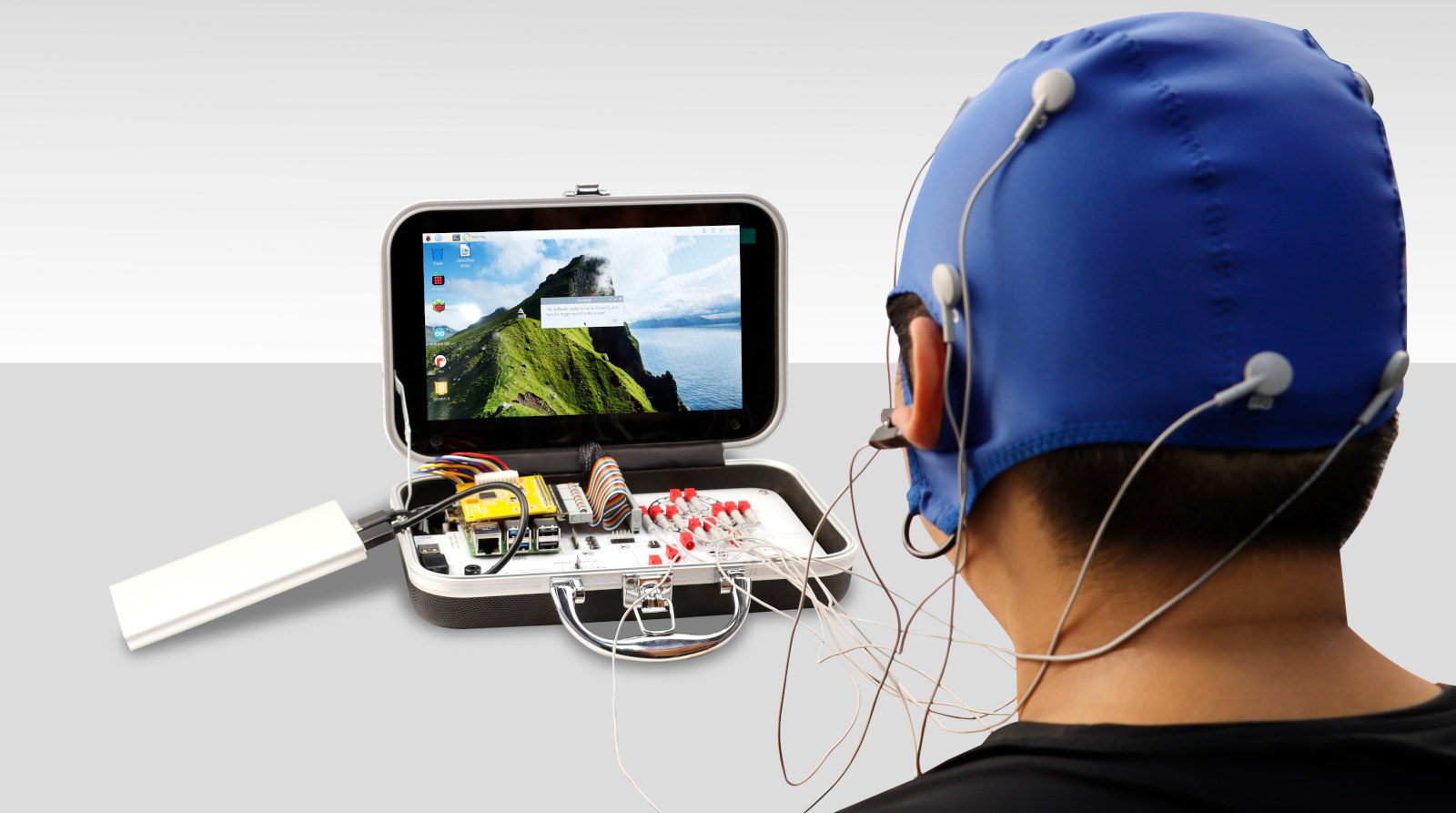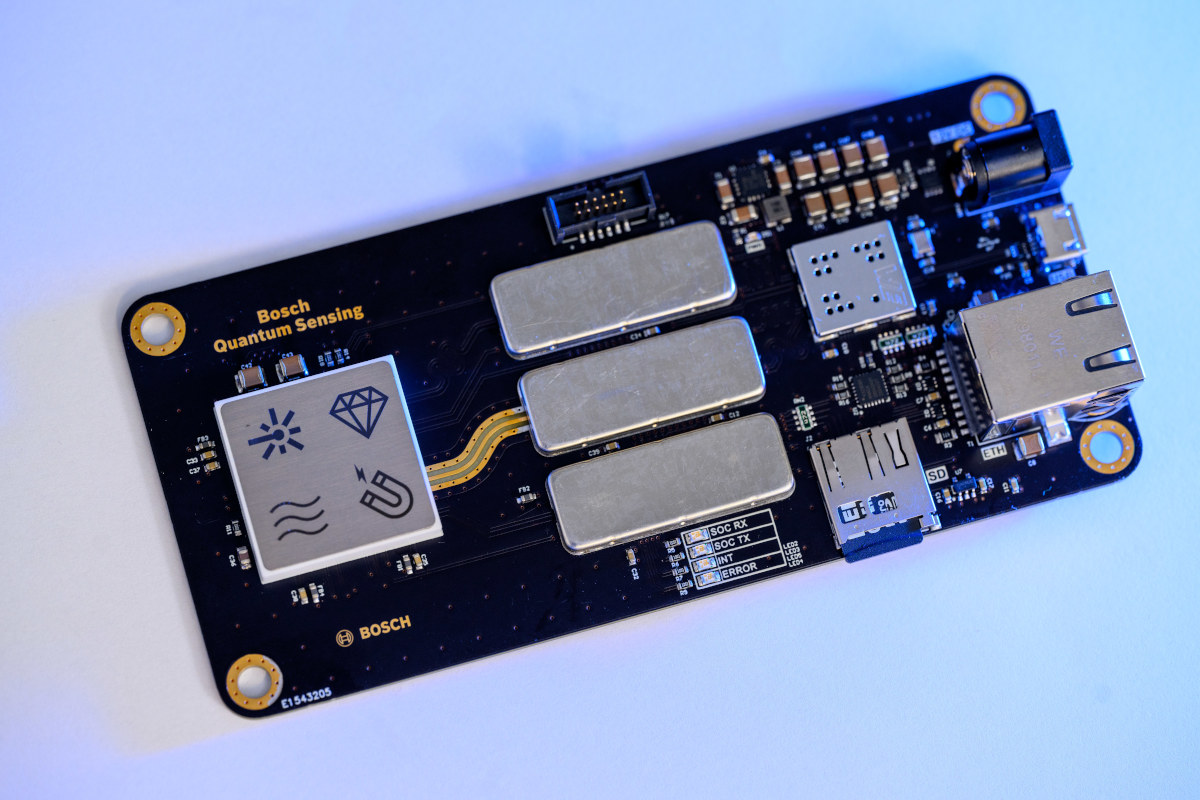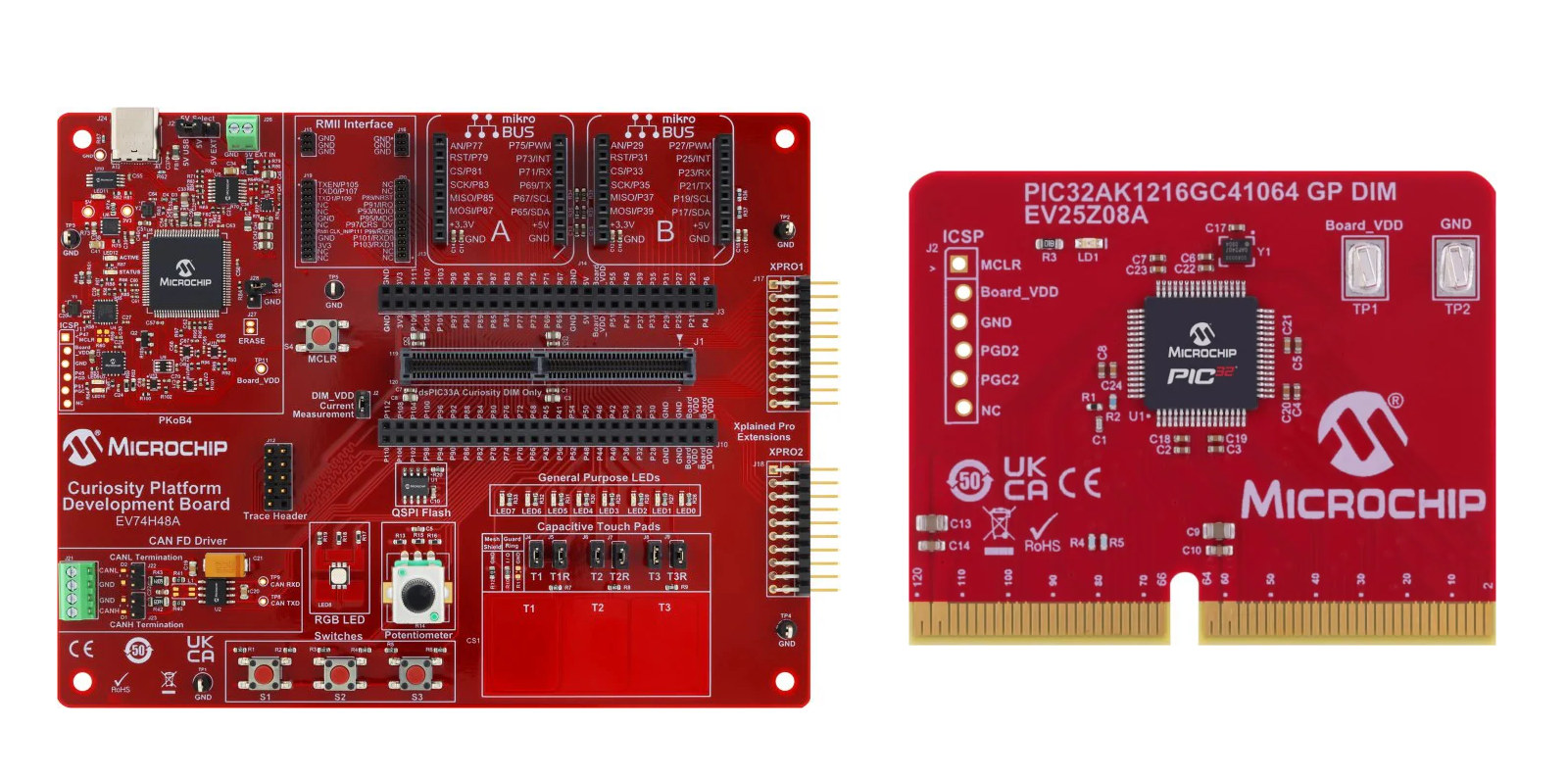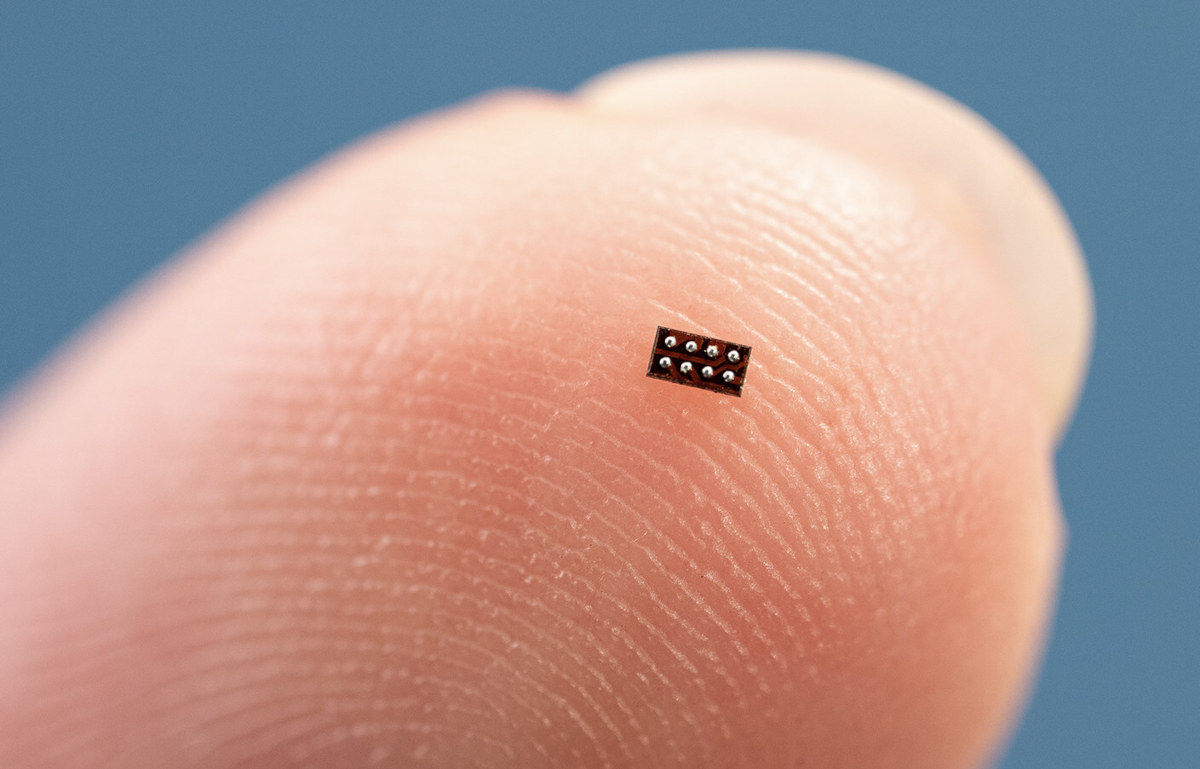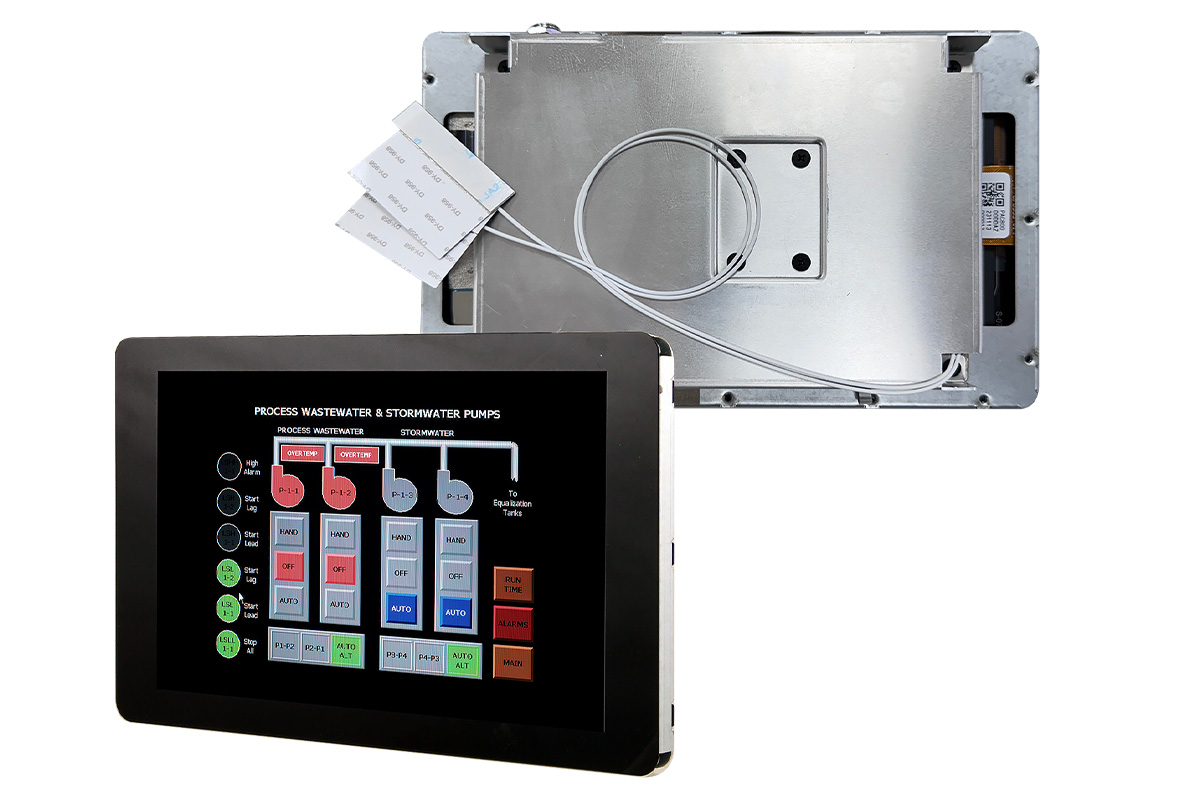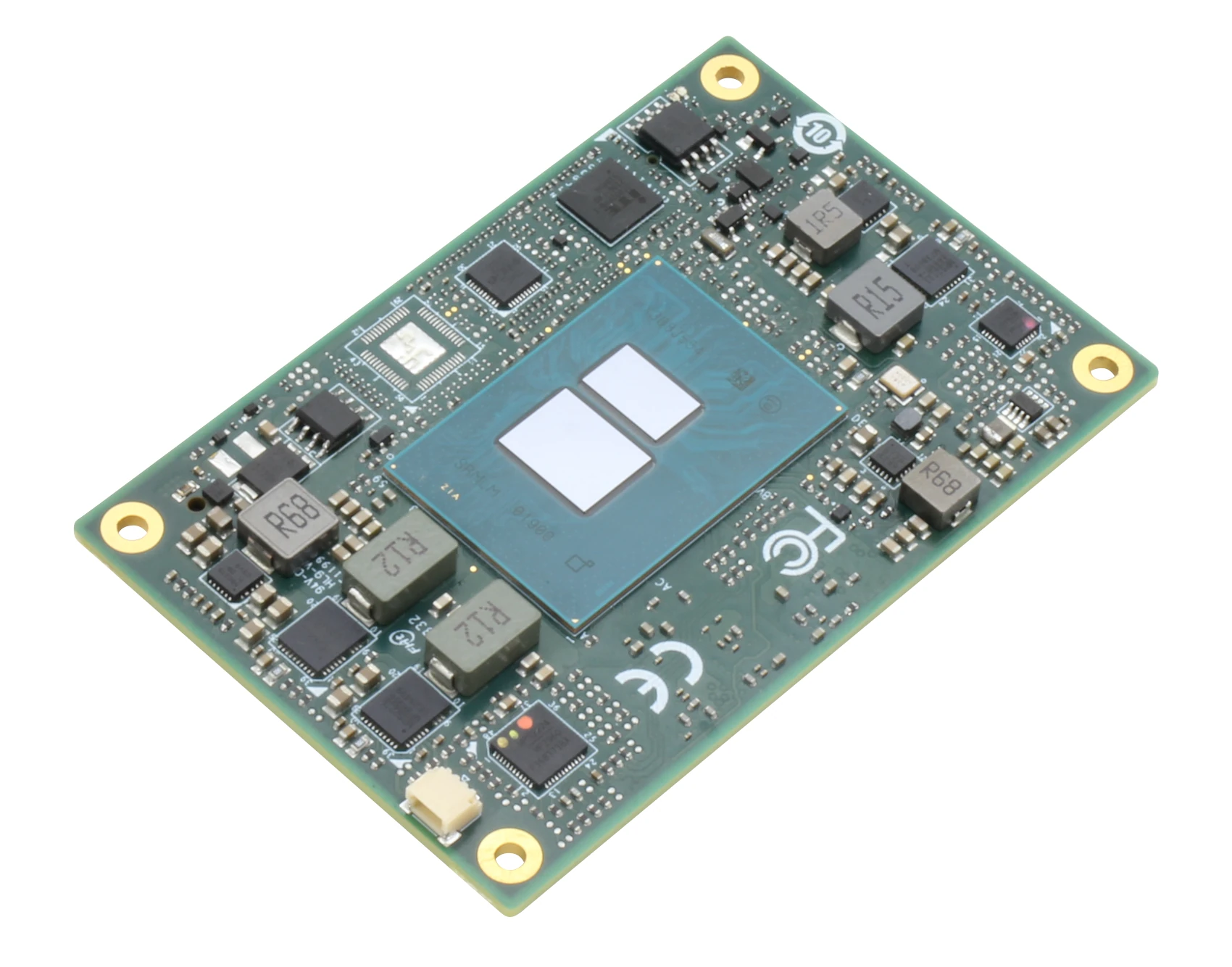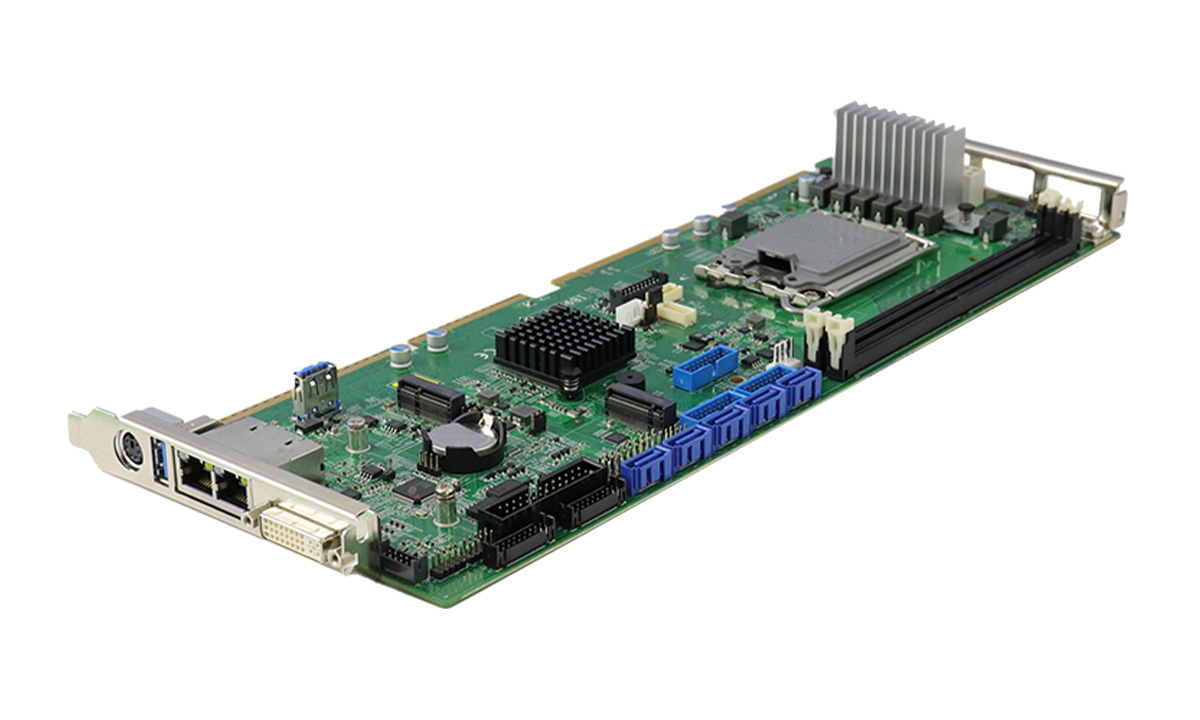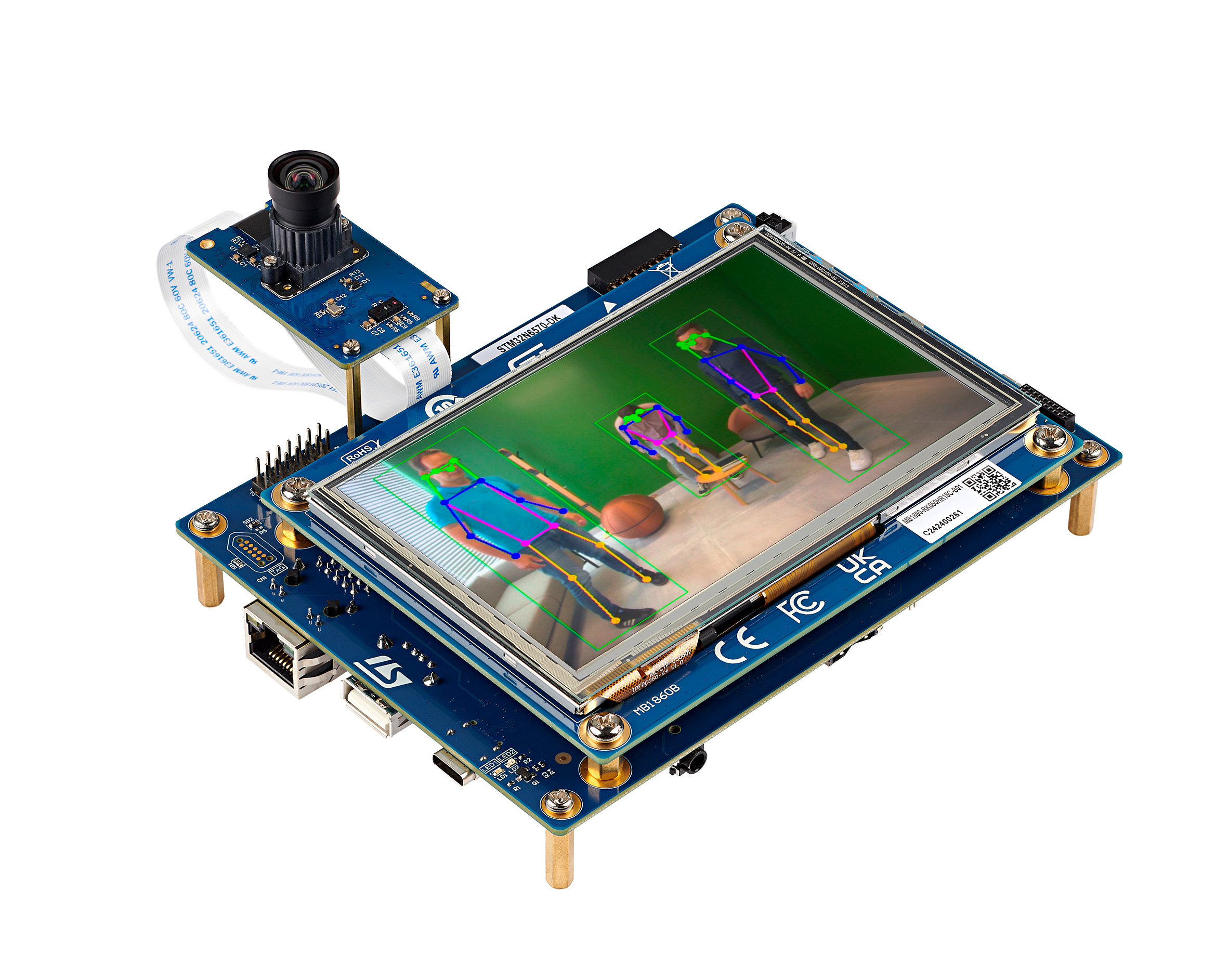Yesterday we wrote about using quantum sensors for brain-computer interfaces (BCI) and other biomedical applications. But that’s the future, and if you want to experiment with brain-computer interface technology and bioscience, the PiEEG kit has everything you need to get started, with all components fitting in a suitcase easy to carry around between your home and university or school. The bioscience home lab is based on the PIEEG Shield for Raspberry Pi introduced in 2023, and features a Raspberry Pi 5 8GB, a 9-inch display, a sensor board, EEG electrodes and cables for brainwave measurement, and electrodes for EMG (muscles), EKG (heart), and EOG (eye) signal recording. The PiEEG kit is comprised of the two main custom boards with the following specifications/features: PiEEG Shield on top of the Raspberry Pi 5 ADC – Texas Instruments ADS1299 Analog-to-Digital Converter for biopotential measurements Host interface – 40-pin GPIO header with SPI protocol […]
Bosch magnetic-field quantum sensors leverage synthetic diamonds, lasers, and microwaves for ultra-precise measurements
Most people have heard about quantum computers, but quantum sensors? I’ve just come across those as Bosch is developing magnetic-field quantum sensors harnessing “the power of quantum physics to enable measurements with unmatched precision” while being much more compact than other quantum sensors using techniques like SQUIDs (superconducting quantum interference device), vapor cells, or optical traps. Bosch Quantum Sensing (that’s the full company name) further explains its magnetic-field quantum sensors surpass the capabilities of conventional sensors by offering a wider measurement range, higher sensitivity, and higher spatial resolution. They currently have an internal quantum sensor prototype/evaluation board that’s about the size of a smartphone, so they are still quite larger than traditional sensors. Bosch quantum magnetometer can measure tiny magnetic field variations with accuracy, including the Earth magnetic’s field, and even analyze the direction of and magnetude of magnetic fields giving the equivalent of a 3D-point magnetic representation. This notably […]
Microchip PIC32A is a 32-bit MCU family with high-performance analog peripherals supporting up to 40 Msps
Microchip Technology PIC32A is a new family of 32-bit microcontrollers clocked at up to 200 MHz with high-speed analog peripherals that include up to 40 Msps 12-bit ADCs, high-speed 5 ns comparators and 100 MHz operational amplifiers for smart edge sensing. The PIC32A microcontrollers also feature up to 16KB RAM with ECC, up to 128KB flash, various I/O, and security and safety features that make them suitable for general-purpose applications across automotive, industrial, consumer, Artificial Intelligence (AI), Machine Learning (ML), and medical markets. Microchip PIC32A specifications: MCU core – 32-bit CPU @ up to 200 MHz with 64-bit FPU, instructions optimized for speed and program code size Memory – Up to 16KB RAM with ECC Storage – Up to 128KB flash with 64x 128-bit OTP area Peripherals 4x PWM generators with up to 2.5ns resolution 3x 4-wire SPI 2x I2C 3x UART; automated UART handling support for LIN 2.2, Digital […]
Texas Instruments MSPM0C1104 is the world’s smallest microcontroller with a size of 1.38mm2
Texas Instruments (TI) has expanded the MSPM0 Arm Cortex-M0+ MCU family with the MSPM0C1104 which is the world’s smallest microcontroller measuring just 1.38mm2 in its WCSP package, or about the size of a black pepper flake. Equipped with up to 16KB flash, 1KB SRAM, I/Os such as GPIO, I2C, UART, SPI, and a 12-bit analog-to-digital converter (ADC), the MSPM0C1104 is optimized for space-constrained applications such as medical wearables and personal electronics. TI MSPM0C1104 specifications: MCU Core – 32-bit Arm Cortex-M0+ CPU clocked at up to 24MHz Memory – 1KB of SRAM Storage – Up to 16KB of flash Peripherals Up to 18x GPIO (5V tolerant) 1x UART, 1 I2C, 1x SPI Analog 1x Analog-to-digital converter (ADC) with up to 10 total external channels, 1.7Msps at 10 bit or 1.5Msps at 12 bit with VDD as the voltage reference Configurable 1.4V or 2.5V internal ADC voltage reference (VREF) Integrated temperature sensor […]
Intel N50 fanless open-frame panel PCs features 7” and 10” PCAP touch display, HDMI 2.0a, RS-485/232
BCM Advanced Research has recently introduced two new fanless open-frame panel PCs powered by an Intel Processor N50 CPU – the OFT07W-ADLN (7-inch) and OFT10W-ADLN (10-inch) – which are low-cost all-in-one embedded computers designed for tablet-like usability. Both modules feature 8GB LPDDR5 memory, 64GB eMMC storage, and an M.2 E-key slot for Wi-Fi/Bluetooth connectivity. These panel PCs come with PCAP touchscreens (800×1280 for 7-inch and 1200×1920 for 10-inch) with various connectivity options including USB, HDMI 2.0a, RS-232/485, and Gigabit Ethernet. With 12-24V DC input supply, fanless operation, and a durable steel frame, these compact open-frame panel PCs are meant for space-constrained applications like HMIs, self-service kiosks, gaming consoles, medical terminals, smart vending machines, digital signage, and more. BCM OFT07W-ADLN and OFT10W-ADLN specifications: SoC – Intel Processor N50 dual-core processor up to 3.4 GHz with 6MB cache, 16EU Intel UHD Graphics; TDP: 6W System Memory – Up to 8GB LPDDR5 onboard Storage – […]
NanoCOM-ADN – A COM Express Type 10 Module based on Intel Alder Lake-N SoC
AAEON NanoCOM-ADN is a compact (84 x 55mm) COM Express Type 10 module based on Intel Alder Lake-N SoCs, namely Processor N50/N97, Atom x7425E, or Core i3-N305 that adds another option to the SMARC, Qseven, and COM Express Type 6 modules offered by the company with the same processors. The NanoCOM-ADN computer-on-module features up to 16GB LPDDR5x soldered-on memory, up to 64GB eMMC flash, and two Intel i226-V 2.5GbE controllers. Its standard 220-pin COM Express board-to-board connector exposes two SATA interfaces, four PCIe Gen3 x1 interfaces, DDI and LVDS video outputs, eight USB interfaces, and more. AAEON explains the Alder Lale-N COM Express Type 10 CPU module is especially suited to digital signage, healthcare imaging, machine vision, industrial, robotics, and edge computing applications. AAEON NanoCOM-ADN specifications: Alder Lake N-series SoC (one or the other) Intel Atom x7425E quad-core processor up to 3.4 GHz with 6MB cache, 24EU Intel UHD […]
iBASE IB996 full-size PICMG 1.3 CPU card features Intel Q670E chipset, supports 12th to 14th Gen Intel Core desktop processors
The iBASE IB996 full-size PICMG 1.3 CPU card, built on the Intel Q670E chipset, supports 12th to 14th Gen Intel Core desktop processors. It is designed for industrial and embedded applications with dual 2.5GbE LAN, DDR5 support, and extensive I/O options including PCI and PCIe x16 interfaces. We haven’t covered this type of card on CNX Software before, so some basic explanations are needed. PICMG 1.3, or SHB Express, is an industrial standard for System Host Boards (SHBs) supporting PCIe, PCI, and PCI-X interfaces first ratified in 2005 (PCIMG 1.0). It uses a backplane to separate the processing unit from I/O, enabling modular design and easy integration. Commonly used in industrial automation, medical systems, and embedded computing, it ensures compatibility and scalability for high-performance applications. iBASE IB996 CPU card specifications: Supported SoC – 14th, 13th, and 12th Gen Intel Core i9/i7/i5/i3 desktop processors (LGA1700 socket) based on the Raptor Lake-S […]
STMicro releases STM32N6 Cortex-M55 MCU series with in-house NPU and dedicated computer vision pipeline
STMicro has announced the availability of the STM32N6 microcontroller series based on the 800MHz ARM Cortex-M55 and the 600 GOPS-capable Neural-ART Accelerator. The STM32N6 is the company’s “newest and most powerful STM32 series,” bringing MPU-level performance to MCUs. It is the first STM32 to feature the Arm Cortex-M55 and offer up to 4.2MB of embedded RAM. Additionally, the chip includes ST’s NeoChrom GPU and an H.264 hardware encoder. According to Remi El-Quazzane, MDRF (Microcontrollers, Digital ICs, and RF Products) President at STMicro, the STM32N6 “marks the beginning of a long journey of AI hardware-accelerated STM32, which will enable innovations in applications and products in ways not possible with any other embedded processing solution.” STMicro offers two versions of the STM32N6 MCU: the STM32N6x7 AI line featuring the Neural-ART accelerator and the STM32N6x5 GP (general-purpose) product line without an NPU. The microcontroller series is primarily targeted at computer vision and audio […]


